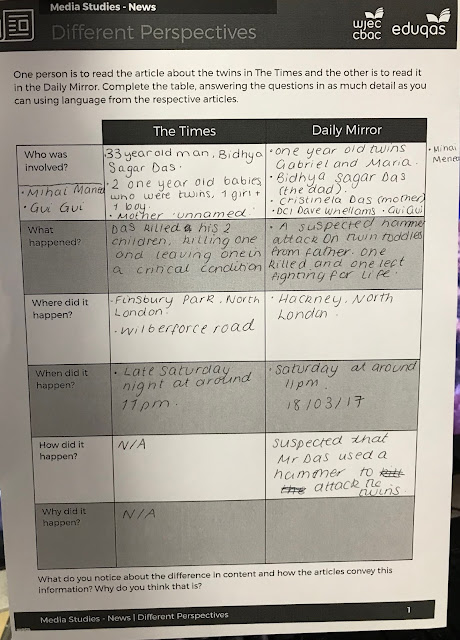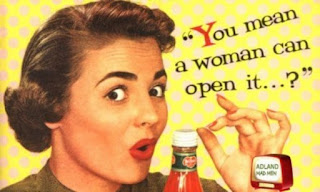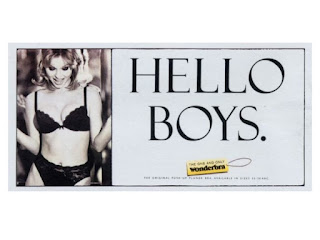Thursday 30 November 2017
Different Perspectives
What do you notice about the difference in content and how the articles convey this information? Why do you think that is?
The Daily Mirror goes into a lot more graphic detail when explaining the event and what happened. The Times on the other hand missed out a lot of information eg. how it happened, unlike the Daily Mirror, who explained the actions in full. This is because The Daily Mirror is a tabloid and its audience likes to read more dramatic news, "if it bleeds, it leads"
Thursday 16 November 2017
Newspaper Codes and Conventions
Codes and Conventions:
Masthead (MH) - title of the newspaper displayed on the front page
Barcode (BC) - used to scan the newspaper when purchasing. It is an optical, machine readable representation of data and contains information such as price.
Caption (C) - brief text underneath an image describing the photograph or graphic.
Headline (H) - a phrase that summarises the main point of the article. Usually in large print and a different style to catch the attention of the reader.
Main Image (MI) - Dominant picture, often filling much of the front cover.
Page Numbers (PN)- A system of organisation within the magazine. Helps you to find what you want to read.
Target Audience (TA) - People that the newspaper aims to sell to.
Pull Quote (PQ) - Something taken from within an article, usually said by the person in the main image.
Classified Ad (CA) - An advertisement that uses only text, as opposed to a display ad, which also incorporates graphics.
Skyline (S) - An information panel on the front page that tells the reader about other stories in the paper to tempt them inside.
Edition (E) - Some newspapers print several of these every night, these are versions with some changes and maybe additional late stories.
Stand First (SF) - Block of text that introduces the story, normally in a different style to the body text and headline.
Byline (B) - The line above the story, which gives the author's name and sometimes their job and location.
Body Text (BT) - Also known as copy. Written material that makes up the main part of an article.
Standalone (SA) - Picture story that can exist on its own or on a front page leading to a story inside.
Centre Spread (CS) - A photograph often in full colour, that runs across the middle two pages.
Lead Story (LS) - Main story, usually a splash.
Gutter (G) - The blank space between margins of facing pages of a publication or the black space between columns of text.
Folio (F) - Top label for the whole page. Can relate to the area covered in the paper for example, National or a big news topic such as Social Media, Syria.
Page Furniture (PF) - Everything on a page except pictures or text of stories.
Friday 10 November 2017
Revive Analyisis
1) What was the task you were given and who was your target audience? As the audience wasn't typical of the product how did you manage to sell it? What was the name of your brand?
The task was designing a sports drink for over 60s. We sold it by showing an entertaining women reflecting on her youth and used upbeat song. The name of the brand was Revive and the tag line was so good which was said throughout the song.
2) Who did you work with and how did you divide the research, planning, filming and responsibilities?
I worked with Connor, Harriet and Rachel. I was the 'actor' in the video so was filmed doing different sporting activities. Harriet filmed the majority of the running shots and Rachel did the underwater ones and dancing ones. We all planned together by making storyboards and rough plans and individually researched other adverts to see how they promoted the product. Connor was the main editor with Harriet and myself editing certain parts along the way. Harriet also did the voiceover for the advert.
3) How did you plan your sequence?
We made storyboards, picture and writing, in order to plan effectively.
4) What research and planning did you undertake?
I looked at previous sports drink adverts and analysed how they promoted their product. Harriet made a rough drawing of a drink and annotated it to see how we could advertise it. We also made a props list and made the bottle so it suited our audience.
5) What was your initial feedback? What did others say about your production? How successful was your sequence?
Our initial feedback was that we needed to make the production more cohesive and add nature sounds. We also got told to add emphasis on the product by changing the brightness/ contrast when the drink is introduced.
6) Identify what went well and with hindsight what you do to improve/do differently.
In hindsight, to improve, we would stabilise the shots to make them flow and have the end shot clearer and put more emphasis on the drink.
7) What have you learnt from completing this task (groups skills, communication, compromise, using your initiative, creative input, production skills, editing etc)
I have learned that when working in a team, different people have different skills so are more confident in different areas of the production. Also I have learnt that when an idea is put forward we should try it out first because it may make the production better and also when in a group compromise and communication is key in order to have a successful production.
8) Looking ahead, how will this learning be significant when completing your future productions?
Yes it will be significant because I have leant a lot about editing which will benefit me in the future and I have learnt to use my initiative in order for the production to be a successful as it can be. Also I have learned how to work with different people and let ideas develop.
Galtung and Ruge
Gatekeeping:
A term which is applied to the editing and filtering process where decisions are made to let some information 'pass through' to the receiver (audience) and other information remains barred.News Values:
Galtung and Ruge
-1965 analysed international news stories to find out what kind of stories came top of the news 'agenda'.- Their findings helped them create a list of 'News Values':
- Threshold: the bigger the impact and reach of the story
- Unexpectedness: an event that is a shock or out of the ordinary
- Negativity: Bad news is more interesting 'if it bleeds, it leads'
- Elite person/places: stories about important people and powerful nations
- Unambiguous: straightforward and easy to write about
- Personalisation: stories that include human interest- 'real' people
- Proximity: stories that are closer to home are more likely to be included
- Continuity/Currency: stories that are already in the news continue to run and are updated.
Newspaper types
Broadsheets:
- Quality or Serious press- Large Title
- One large picture
- What's inside ( quick review)
- Lots of text
- Multiple headlines (serious)
- Politics
- Lacking in colour
- Amount of text caters to older audience
- Sophisticated articles
- A/B/C1 demographics
Tabloids:
- Popular press- Lots of colour
- More reality based (popular culture)
- Minimal text
- No long article on the front page
- Less in-depth reporting
- Puns and jokes used in headlines
- More focus on human interest stories, celebrity gossip
- Use of gimmicks e.g. bingo games, free travel tickets, phone-in surveys
- C2/D/E demographics
Thursday 9 November 2017
The Market
The Market
Popular:
The SunThe Sun on Sunday
Daily Mirror
Sunday Mirror
Sunday People
Daily Star
Daily Star Sunday
Mid-Market:
Daily MailThe Mail
London Evening Standard
Metro
Sunday Express
Daily Express
Quality:
The Daily TelegraphThe Sunday Telegraph
The Guardian
The Observer
The Times
The Sunday Times
The Independent
i
Financial Times
Thursday 2 November 2017
Hypodermic Needle Theory and Moral Panic
MORAL PANIC:
Moral panic is a feeling of fear spread among a large number of people that some evil threatens the well-being of society. A Dictionary of Sociology defines a moral panic as " the process of arousing social concern over and issue- usually the work of moral entrepreneurs and the mass media".
E.g. Isis
HYPODERMIC NEEDLE THEORY:
Moral panic is a feeling of fear spread among a large number of people that some evil threatens the well-being of society. A Dictionary of Sociology defines a moral panic as " the process of arousing social concern over and issue- usually the work of moral entrepreneurs and the mass media".
E.g. Isis
HYPODERMIC NEEDLE THEORY:
The hypodermic needle model ( also known as the hypodermic-syringe model, transmission-belt model, or magic bullet theory) is a model of communications suggesting that an intended message is directly received and wholly accepted by the receiver.
Representations
-A representation is the way in which people, events and ideas are presented to an audience. The media will take something that is already there and represent it to us in a way that they choose.
-Representations are created by media text producers. What they choose to present to us is controlled by Gatekeepers.
Gatekeepers: Any person involved in a media production with the power to make a decision about something the audience are allowed to read, hear or see, and not get to see.
Stereotypes: Media industries use stereotypes because the audience will instantly understand them. Stereotypes are like 'visual shortcuts', they are repeated so often we end up seeing them as normal/ true.
Archetypes: The 'ultimate' stereotype, e.g. the white stiletto wearing, big busted, brainless, blonde bimbo.
Countertype: This is a representation that challenges traditional stereotypical associations of groups of people or places.
Disability
Regionalism
Class
Age
Gender
Ethnicity
Sexuality
This advert for Alcoa Aluminium shows that a stereotype related to women is that they are weak. The caption "you mean a woman can open it...?" suggests that women don't have enough strength to even open a lid on a bottle. The shocked expression on the woman also shows how it may be a rare occasion that a woman can open a bottle further stereotyping them as weak.
This more modern advert has sexualised the woman. The ad is for a Tom Ford men's fragrance. the right image shows a man being clung onto by a woman's hand suggesting that women are sexual objects to men. This is further supported by the left image, where the bottle of fragrance is placed over a woman's intimate area therefore stereotyping them as a sexual goal/ object for men. As well as this, the let picture shows the woman as having soft, clear, spotless intimate skin, therefore suggesting all women should look like that.
This Wonderbra advert is once again sexualising women. It is suggesting that a bra is a sexual item of clothing instead of showing its real purpose of supporting women. The caption "Hello boys" further shows how the woman has been sexualised and stereotyped that as she is only wearing her underwear, she therefore only wants the attention of boys.
Countertype example:
This music video is for Beyoncé's- Grown Women. The thought behind the song is that woman can do whatever they want and are strong, independent and don't need men.
Wednesday 1 November 2017
Frutella 'Too Juicy' advert
1) Who did you work with and how did you manage the task between you?
I worked with Lee, Emily and Dan, I feel like we worked well together when creating
our advert. Each person was allocated a job so we all took a role on within the
production. We created our story board of shots and timings so that we could follow along
without getting confused or missing a scene out.
2) How did you plan your sequence? What processes did you use?
We screen grabbed each shot of the original advert and we then made a story board
each shot and annotated it with how long each shot lasted and what kind of shot it was.
3) What theorists do you think you could apply to your task?
4) What factors did you have to take into account when planning, shooting and editing?
We had to make sure each shot was the correct timings so that it fit with the music.
Dan had to lip sync to the music so therefore timings were very important. We also had
to make sure each shot was the same as in the original, the original video was put in the
right bottom corner so if it didn't match up then it would be obvious to tell.
5) How successful was your sequence? Please identify what worked well and with hindsight
what would you improve/ do differently?
Our sequence was successful because all of the lip syncing matched up and each shot
resembled the original. We also managed to be creative and re make some shots that
were harder to shoot. To improve, our end shot could have linked up better with the
original by getting the timings more accurate, and at the start, some shots were filmed
the wrong way round (back-to-front).
6) What did others say about your production?
Others said that they enjoyed our production and were impressed at how we put together
different shots to make it look the same as the original. They also said that we were
imaginative with our creation and use of props.
7) What have you learnt from completing this task?
From this task I have managed to learn how to structure and plan a production as part of a
team. I have learnt how to put together story boards and I have discovered how correct
correct timings are when producing. I have also developed my skills with in Adobe Premier
when editing the advert.
8) Looking ahead, how will this learning be significant when completing your future
productions?
This learning will really help my future productions as I am aware of my strengths and
weaknesses on this task so therefore I know what to put extra time and care into next
time.
Subscribe to:
Posts (Atom)
Stranger Things Representation Essay
One very evident representation shown within season 1, episode 1 of Stranger Things is the role of single mothers. Being a major character...
-
The Big Issue Institutional Factors and Marketing First published in 1991 The Big Issue has gone from strength to strength to ...
-
Stranger things intro Overview The series is set in 1983...





